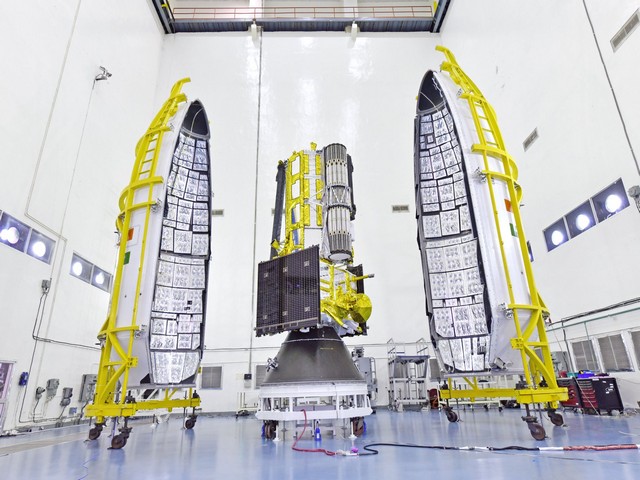
ISRO to launch NASA-ISRO Synthetic Aperture Radar satellite on July 30
Jul 21, 2025
New Delhi [India], July 21 : The Indian Space Research Organisation on Monday said that it will launch the NISAR, the first joint Earth observation satellite by ISRO and NASA, from the Satish Dhawan Space Centre in Sriharikota, Andhra Pradesh on July 30 at 17:40 IST.
According to ISRO, the launch of the NASA-ISRO Synthetic Aperture Radar (NISAR) satellite will mark a milestone in over a decade of collaboration between the two space agencies.
Additionally, ISRO stated that the satellite would provide high-resolution, day-and-night, all-weather data by scanning the entire world every 12 days, identifying minute variations in the Earth's surface, such as vegetation dynamics, ice sheet shifts, and ground deformation.
"On July 30, 2025 at 17:40 IST, ISRO's GSLV-F16 will launch NISAR, the first joint Earth observation satellite by ISRO & NASA, from Sriharikota. NISAR will scan the entire globe every 12 days, providing high-resolution, all-weather, day-and-night data. It can detect even subtle changes in Earth's surface--like ground deformation, ice sheet shifts, and vegetation dynamics," ISRO stated in a post on X.
"The mission will support many critical applications, including sea ice monitoring, ship detection, storm tracking, soil moisture changes, surface water mapping, and disaster response. A milestone in over a decade of collaboration between ISRO & NASA/JPL," it added.
According to ISRO, the NISAR satellite, weighing 2,392 kg, will be injected into a 743 km Sun-synchronous orbit with an inclination of 98.40 degrees.
Equipped with dual-frequency Synthetic Aperture Radar--NASA's L-band and ISRO's S-band--NISAR features a 12-metre unfurlable mesh reflector antenna integrated into ISRO's modified I3K satellite bus. Utilising SweepSAR technology for the first time, the satellite will offer a 242 km swath with high spatial resolution, enabling comprehensive Earth observation.
"NISAR, weighing 2392 kg, is a unique Earth observation satellite and the first satellite to observe the Earth with a dual-frequency Synthetic Aperture Radar (NASA's L-band and ISRO's S-band), both using NASA's 12m unfurlable mesh reflector antenna, integrated to ISRO's modified I3K satellite bus. NISAR will observe Earth with a swath of 242 km and high spatial resolution, using SweepSAR technology for the first time," ISRO stated in a press release.
NISAR's ability to provide high-resolution, all-weather data every 12 days will support critical applications, from tracking climate change impacts to aiding disaster management.
"The satellite will scan the entire globe and provide all weather, day & night data at 12-day interval and enable a wide range of applications. NISAR can detect even small changes in the Earth's surface, such as ground deformation, ice sheet movement and vegetation dynamics. Further applications include sea ice classification, ship detection, shoreline monitoring, storm characterisation, changes in soil moisture, mapping & monitoring of surface water resources and disaster response," the release added.
























